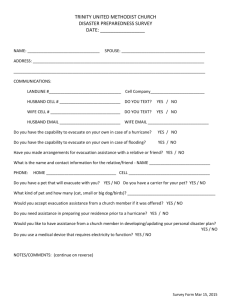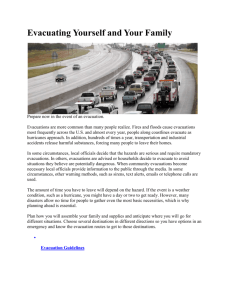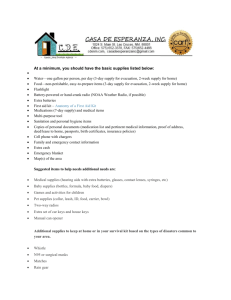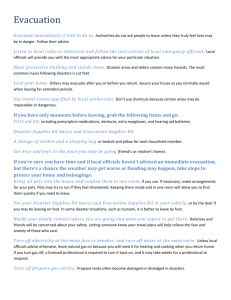Appendix A: Hazard Checklists and Procedures CheCklist #1 eMergenCY eVaCuation ProCeDures
advertisement
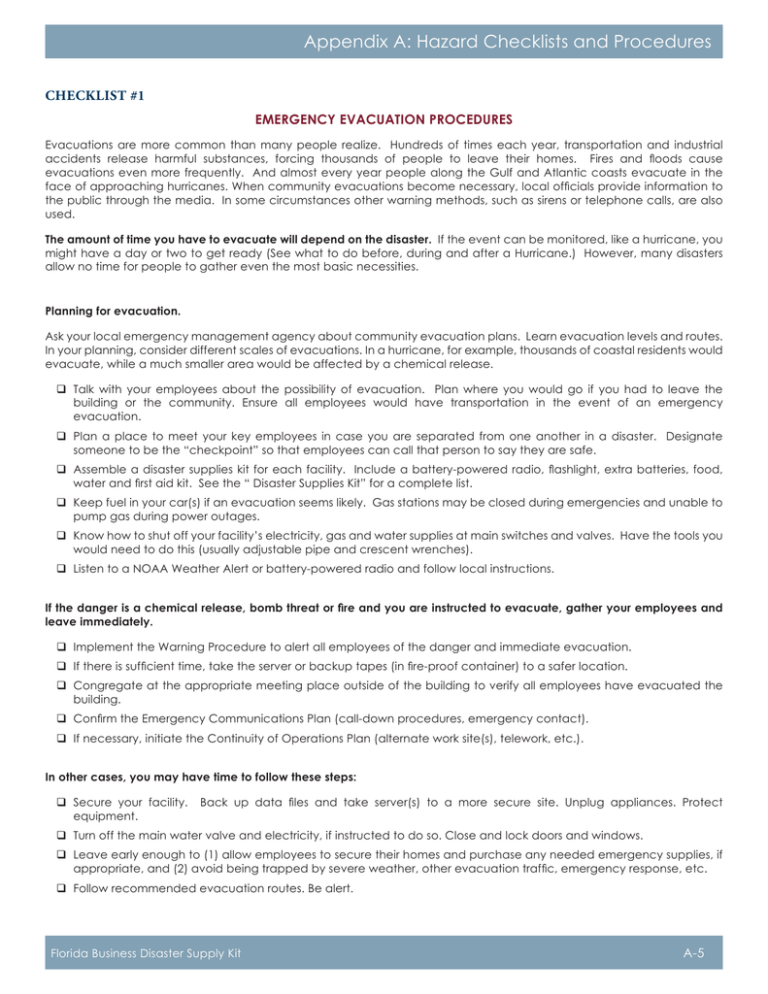
Appendix A: Hazard Checklists and Procedures Checklist #1 Emergency Evacuation Procedures Evacuations are more common than many people realize. Hundreds of times each year, transportation and industrial accidents release harmful substances, forcing thousands of people to leave their homes. Fires and floods cause evacuations even more frequently. And almost every year people along the Gulf and Atlantic coasts evacuate in the face of approaching hurricanes. When community evacuations become necessary, local officials provide information to the public through the media. In some circumstances other warning methods, such as sirens or telephone calls, are also used. The amount of time you have to evacuate will depend on the disaster. If the event can be monitored, like a hurricane, you might have a day or two to get ready (See what to do before, during and after a Hurricane.) However, many disasters allow no time for people to gather even the most basic necessities. Planning for evacuation. Ask your local emergency management agency about community evacuation plans. Learn evacuation levels and routes. In your planning, consider different scales of evacuations. In a hurricane, for example, thousands of coastal residents would evacuate, while a much smaller area would be affected by a chemical release. Talk with your employees about the possibility of evacuation. Plan where you would go if you had to leave the building or the community. Ensure all employees would have transportation in the event of an emergency evacuation. Plan a place to meet your key employees in case you are separated from one another in a disaster. Designate someone to be the “checkpoint” so that employees can call that person to say they are safe. Assemble a disaster supplies kit for each facility. Include a battery-powered radio, flashlight, extra batteries, food, water and first aid kit. See the “ Disaster Supplies Kit” for a complete list. Keep fuel in your car(s) if an evacuation seems likely. Gas stations may be closed during emergencies and unable to pump gas during power outages. Know how to shut off your facility’s electricity, gas and water supplies at main switches and valves. Have the tools you would need to do this (usually adjustable pipe and crescent wrenches). Listen to a NOAA Weather Alert or battery-powered radio and follow local instructions. If the danger is a chemical release, bomb threat or fire and you are instructed to evacuate, gather your employees and leave immediately. Implement the Warning Procedure to alert all employees of the danger and immediate evacuation. If there is sufficient time, take the server or backup tapes (in fire-proof container) to a safer location. Congregate at the appropriate meeting place outside of the building to verify all employees have evacuated the building. Confirm the Emergency Communications Plan (call-down procedures, emergency contact). If necessary, initiate the Continuity of Operations Plan (alternate work site(s), telework, etc.). In other cases, you may have time to follow these steps: Secure your facility. equipment. Back up data files and take server(s) to a more secure site. Unplug appliances. Protect Turn off the main water valve and electricity, if instructed to do so. Close and lock doors and windows. Leave early enough to (1) allow employees to secure their homes and purchase any needed emergency supplies, if appropriate, and (2) avoid being trapped by severe weather, other evacuation traffic, emergency response, etc. Follow recommended evacuation routes. Be alert. Florida Business Disaster Supply Kit A-5


